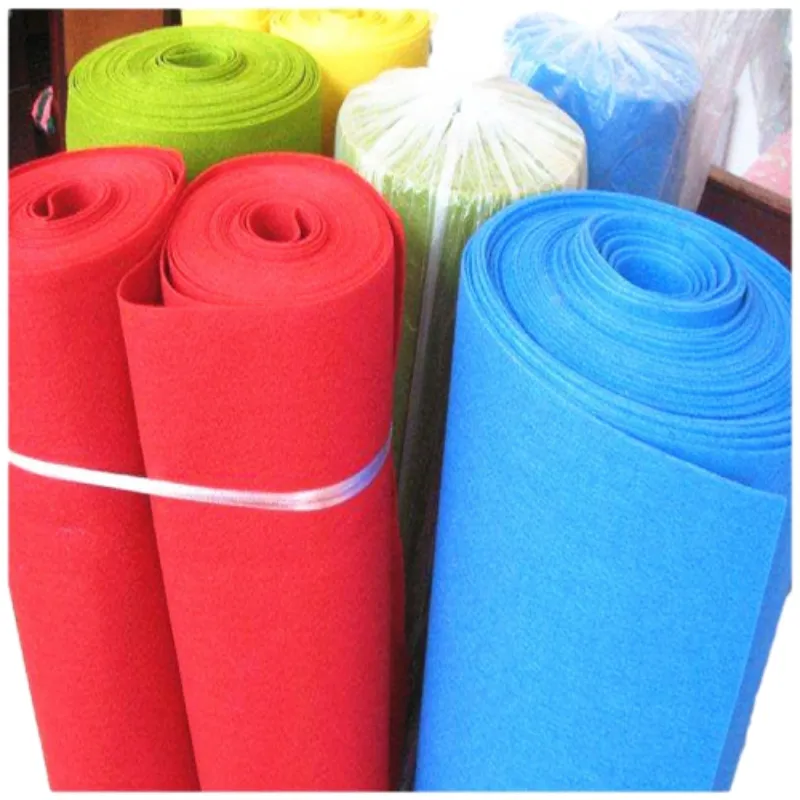Versatile Oil Absorbing Felt for Efficient Spill Cleanup and Environmental Protection
Understanding Oil Absorbent Felt Properties, Applications, and Benefits
Oil absorbent felt is a specialized material designed to effectively soak up and contain oil spills, leaks, and drips. Its unique composition and structure make it particularly suited for a wide range of industries, including automotive, marine, manufacturing, and environmental protection. This article delves into the properties, applications, and benefits of oil absorbent felt, shedding light on why it is a critical resource in managing oil-related challenges.
Composition and Properties
Oil absorbent felt is primarily made from polypropylene or polyester fibers, which are known for their durability and absorbent qualities. The fibers are processed and transformed into sheets or rolls, creating a mat-like structure that enhances its ability to soak up oil while resisting degradation. One of the essential properties of oil absorbent felt is its hydrophobic nature, meaning it does not absorb water. This characteristic allows it to selectively soak up oils and hydrocarbons from the surface of water, making it especially useful in marine applications.
The absorption capacity of oil absorbent felt varies depending on its thickness and density, but most products can absorb several times their weight in oil. Additionally, the material is lightweight and easy to handle, making it practical for use in diverse environments. Oil absorbent felt often comes in various colors, with the standard being white or gray, allowing users to identify the type of spills effectively.
Applications
1. Industrial Settings Many manufacturing and industrial facilities utilize oil absorbent felt to manage spills and leaks from machinery, storage tanks, and transport equipment. The felt can be placed under machines as preventive measures, on floors to catch drips, or used to clean up spills after they occur.
2. Marine Environments Oil absorbent felt is especially vital in marine applications where oil spills can have devastating effects on aquatic ecosystems. These felt mats can be deployed on water surfaces to absorb excess oils while allowing water to pass through. This capability is crucial during spill response operations to minimize environmental damage.
3. Automotive In garages and workshops, oil absorbent felt can be used to manage engine leaks, oil changes, and routine maintenance tasks. It provides a safe and effective way to handle excess oils, ensuring a cleaner working environment and reducing slip hazards.
oil absorbent felt

4. Household Use Smaller rolls or sheets of oil absorbent felt have made their way into home toolkits for DIY enthusiasts. They are handy in managing spills from vehicles parked in garages or for cleaning up small leaks from machinery and tools.
Benefits
1. Environmental Protection By effectively absorbing oils, this material minimizes the risk of pollution from oil spills, thereby protecting local waterways and ecosystems. Prompt cleanup using oil absorbent felt can reduce the long-term impact on aquatic life.
2. Cost-Effectiveness Using oil absorbent felt can save companies significant costs associated with clean-up operations, environmental fines, and damage control. By preventing spills from spreading, it helps maintain compliance with environmental regulations.
3. Ease of Use The lightweight nature of oil absorbent felt makes it easy to install and remove. Workers can quickly lay down sheets of felt in areas prone to spills, and cleanup can be executed efficiently with minimal training.
4. Versatility Oil absorbent felt is adaptable to various environments and tasks. It can be cut to size, layered for increased absorption, or combined with other oil cleanup products for more effective results.
Conclusion
Oil absorbent felt is an indispensable tool in the fight against oil spills and leaks across various sectors. Its unique properties, wide-ranging applications, and substantial benefits make it a worthwhile investment for businesses and individuals alike. As industries continue to strive for sustainability and environmental protection, the demand for effective oil absorbent solutions like felt will likely grow, paving the way for innovation in spill management technologies. Understanding and utilizing this material can contribute to a cleaner and safer environment, ultimately benefiting society as a whole.
-
What Makes Felt a Great Choice?NewsNov.19,2024
-
Total Mixed Ration (TMR) Feed for CattleNewsNov.19,2024
-
The Ultimate Guide for Felt Polishing WheelsNewsNov.19,2024
-
Industrial Felt for Various ApplicationsNewsNov.19,2024
-
Felt Makeup Bags and Inserts BagsNewsNov.19,2024
-
Choosing the Right Hotel TowelsNewsNov.19,2024
-
Your Go-To Guide For Affordable Wholesale Wool FeltsNewsOct.31,2024







